“We can’t destroy the inequities between men and women until we destroy marriage.” — Robin Morgan, former Ms Magazine editor.
“If women are to effect a significant amelioration in their condition, it seems obvious that they must refuse to marry.” — Germain Greer, renowned feminist.
Anyone who was around during the 1960s and -70s knows that feminism had a decided anti-marriage bent. The movement depicted the traditional family as a system in which men oppressed women and children; never mind the demanding and sometimes life destroying sacrifices that husbands and fathers made to provide for those whom they allegedly oppressed.
Since that time, co-habitation, out of wedlock childbearing, and skyrocketed divorce rates have become hallmarks of our culture. At the same time, fertility rates have fallen drastically from the highs achieved during the formation of the baby boom generation – those born from 1946 through 1964.
It might seem obvious that married couples, on average, have more children than unmarried couples or single women. Assumptions, however, can be far from accurate, so it’s worth seeing the extent to which research supports the contention. The following graphs are based on data from the US Census Bureau 2004 “Fertility of American Women: Current Population Survey – June 2004.”
All races, ages 15 to 44: Percent by number of children. “Married” indicates women who have ever been married. “Unmarried” indicates women who have never married.
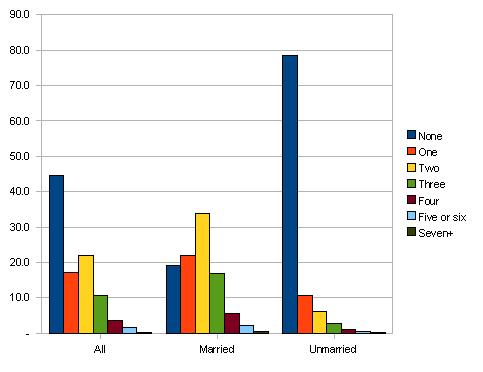
One set of values alone emphasizes the extreme difference in fertility rates between ever married and never married women. Nearly 80% of women who have never married have no children. Of those women who have ever married, less than 20% have never had a child. The category of no children is the only group in which never married women dominate.
In the categories of one, two, three, or more children, married women dominate. The following graphs show that this is true across racial demographic groups.
Non-Hispanic Whites, ages 15 to 44: Percent by number of children. “Married” indicates women who have ever been married. “Unmarried” indicates women who have never married.
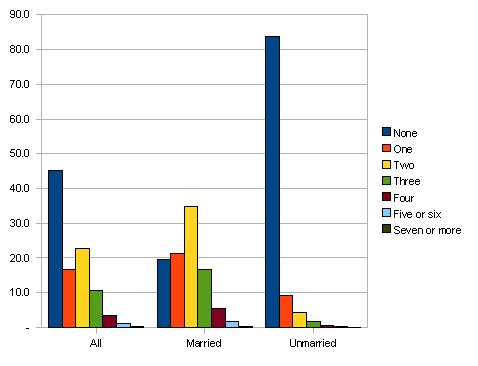
Blacks, ages 15 to 44: Percent by number of children. “Married” indicates women who have ever been married. “Unmarried” indicates women who have never married.
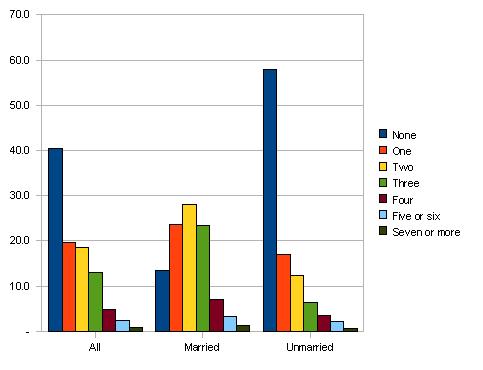
Asians, ages 15 to 44: Percent by number of children. “Married” indicates women who have ever been married. “Unmarried” indicates women who have never married.
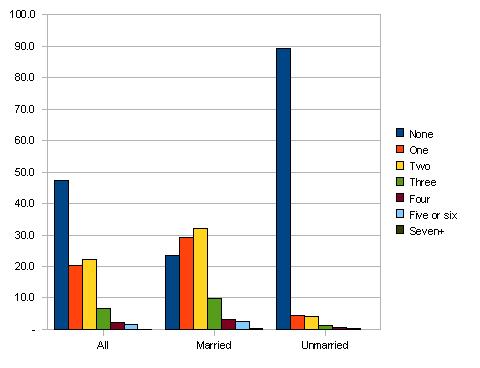
Hispanics, ages 15 to 44: Percent by number of children. “Married” indicates women who have ever married. “Unmarried” indicates women who have never married.
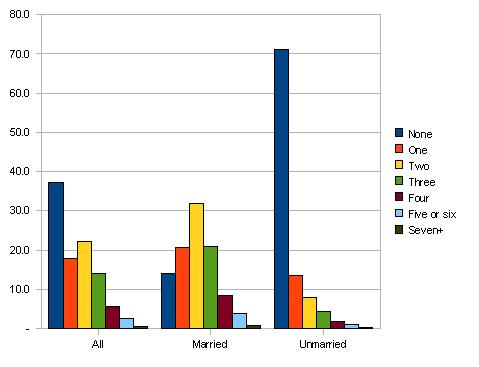
In their 2002 report, “Why Men Won’t Commit,” Barbara Dafoe Whitehead and David Popenoe of the State University of New Jersey, Rutgers, reported ten major reasons that men are turning away from marriage in what has come to be known as the “Marriage Strike.” These reasons include:
1.“They can get sex without marriage more easily than in times past.”
2.“They can enjoy the benefits of having a wife by cohabiting rather than marrying.”
3.“They want to avoid divorce and its financial risks.”
Based on my personal experience discussing this matter with young men, it should be added that many men avoid marriage and fatherhood due to a fear of losing contact with their children after divorce. Recent reports by the Census Bureau show that households composed of married couples have fallen into the minority (49.7%).
With men now responding to, among other things, high divorce rates and what they perceive as extreme, anti-male bias in family courts, some people, at least, are starting to get full measure of what they have sought for years – the destruction of traditional marriage.
At the same time, society has experienced a dangerous collapse of fertility rates.

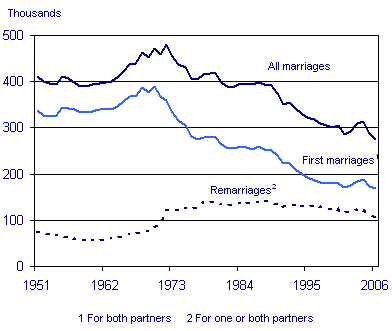
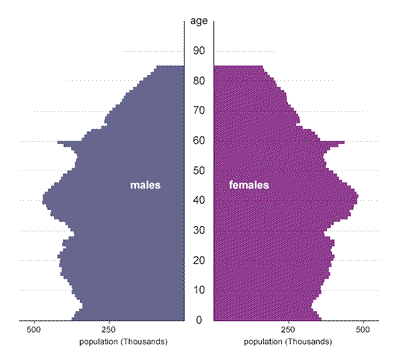







 Comments(1)
Comments(1)